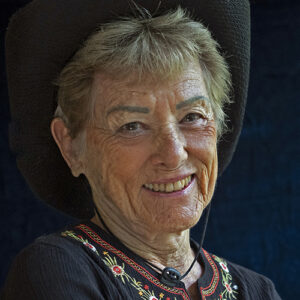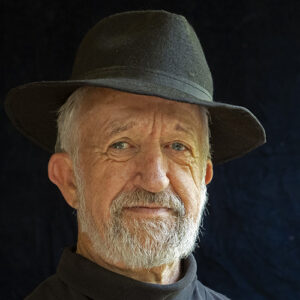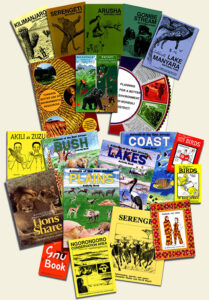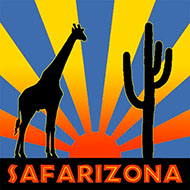 Jeannette Hanby: I’m haunted by early memories of smoggy southern California where nature was relentlessly paved over by suburban development. I grew up wanting to know how to stop humans from ruining our planet. A high school teacher exposed me to philosophy and challenged me to a quest to understand human nature. To this end, I majored in physiological psychology at UC Berkeley, then decided to get some practical education while working with abused and abandoned children in Los Angeles County. Emotionally exhausted, I sought jobs in wilder parts of California – on the Big Sur Coast and with a placer gold-mining crew on the Feather River. I tell the story of those years in the book Feathered Canyons.
Jeannette Hanby: I’m haunted by early memories of smoggy southern California where nature was relentlessly paved over by suburban development. I grew up wanting to know how to stop humans from ruining our planet. A high school teacher exposed me to philosophy and challenged me to a quest to understand human nature. To this end, I majored in physiological psychology at UC Berkeley, then decided to get some practical education while working with abused and abandoned children in Los Angeles County. Emotionally exhausted, I sought jobs in wilder parts of California – on the Big Sur Coast and with a placer gold-mining crew on the Feather River. I tell the story of those years in the book Feathered Canyons.
These experiences exposed me to wildlife and nature in its full glory and made me want to expand my understanding of human behavior by studying animal behavior more deeply. I returned to graduate school at the University of Oregon to earn a PhD, based on her study of the sociosexual behaviors of a troop of Japanese macaques. I was invited to Cambridge University in UK to manage research on a colony of captive monkeys, studying how and why individuals form social groups and bonds.
 David Bygott: I grew up in rural England, where I became fascinated by nature and learnt to draw and paint the wildlife I met. As an Oxford zoology graduate I joined Jane Goodall’s Gombe Stream Research Project in 1969, and studied wild chimpanzees for two years. While writing my PhD on chimp aggression, at U of Cambridge, I met Jeannette. We soon realized that that our interests in how and why primates get along – or don’t – blended well and we quickly bonded, marrying in 1973.
David Bygott: I grew up in rural England, where I became fascinated by nature and learnt to draw and paint the wildlife I met. As an Oxford zoology graduate I joined Jane Goodall’s Gombe Stream Research Project in 1969, and studied wild chimpanzees for two years. While writing my PhD on chimp aggression, at U of Cambridge, I met Jeannette. We soon realized that that our interests in how and why primates get along – or don’t – blended well and we quickly bonded, marrying in 1973.
Studying non-verbal social hunters – wild lions – seemed a great way to explore the roots of social grouping. So off we went for 4 years of lion research in Serengeti, returning to England for writing and learning. Our book Lions Share tells the story of one of their study prides. We then embarked on a lecture tour across the USA during which Jeannette raised funds in order to return to Tanzania where she could share her passion for wildlife and conservation with Tanzanian schoolchildren. She worked to establish the Malihai Clubs program from a base in Arusha, while David taught zoology for 2 years at the University of Dar es Salaam.

Realizing that we worked better together than apart, in 1984 we moved away from organized conservation and academia to become free-lance wildlife interpreters. We built our own home near Lake Eyasi, where we wrote and illustrated books for tourists as well as local readers, created visitor displays and guided photographic safaris. Meanwhile we hosted field anthropologists, learned about traditional cultures and survival in a Tanzanian village, and explored the wilds of northern Tanzania. We tell stories from these years in Spirited Oasis and Beyond the Oasis.
Eventually the pressures of population and bureaucracy made this life less attractive. Seeking a more stable and permanent base, in 2003 we moved to a different kind of village, a cohousing community in Arizona. We find this social experiment intriguing, and have also become volunteers with local conservation groups. We occasionally return to Tanzania as tour guides, mainly for National Geographic Expeditions.
What can you call this way of life, with one foot in Africa and one in the Sonoran desert? Safarizona!
